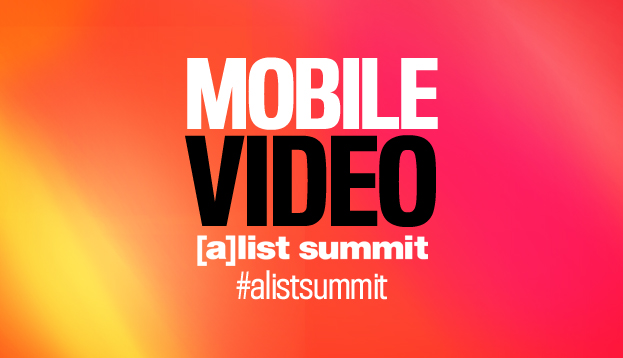The smartphone represents freedom, evolution and opportunity. For consumers this device is the freedom to go anywhere and consume content everywhere. With faster data speeds and more robust tech packed into smaller spaces people are watching increasing amounts of video across their favorite sites. For the media business the mobile device becomes a way to generate more demand for great content, and it also represents a competitive threat to the entrenched media companies like the Big TV ecosystem. The mobile device is an opportunity for anyone to become their own media company, to create their own unique voice and to become a celebrated voice to within their community. For marketers too the smartphone is an opportunity to compete with Big TV for the viewing time of interesting and smartly crafted content. Instead of being the intrusive, interruptive and confined content people are forced to watch marketers create the content smartphone users want to watch.
Creators are monitoring the world in real time and creating relevant connections to their audience. These influencers shoot video on their smartphone, edit in-app, and post to their audience. Consumers have the insatiable demand for content as they have the ability to watch video while they wait in line, sit on a phone call and commute.
Mobile video consumption is fueled by young people. People aged 50-64 watch only 19 minutes of video per day, while people 18-34 watch 35 minutes of video per day, and people 35-49 watch 26 minutes per day. It is clear that children, those under 18, are heavy consumers of online video as properties like Netflix, Amazon and YouTube have substantial children’s content available. Combined with a flood of influencers who speak to children’s interests and speak to their point of view it is clear that mobile viewing is a trend that is picking up steam across age groups, but that will blossom as children of the native mobile generation age up. Key points around authenticity, transparency and interactivity will all evolve as today’s children grow into adults.
According to Business Insider, next year almost half of all video ad views will be served to mobile devices; smartphones and tablets.
Short content is key. According to Netflix 90 percent of their mobile viewing happens in increments of 10 minutes or less. According to FreeWheel 60 percent of mobile video ads are served to videos less than 20 minutes long.
As the entire digital ecosystem evolves into a mobile ecosystem, content becomes shorter. Influencer creators become more important as they maintain deep and authentic connections to their audiences and branded integrations more prevalent as marketers partner with influencers to reach audiences.
As such, marketers act more like media companies by creating their own high quality content and cultivating owned audiences, rather than renting them from media companies. Marketers also own more direct influencer relationships rather than renting them from agents.
More native ad units proliferate as banners are proven to be blunt force and largely ineffective tools to engage audiences. However, banners become valuable to activate on sophisticated geo-location data from companies like Foursquare, Twitter and others. Application of this tech involves ad-serving based on where the phone’s owner has physically been recently, where they go a lot, or the place they currently are in. Content stream ad units become part of the viewing experiences. Users will scroll through content, see ads, and continue scrolling through their curated content.
The sum of these changes show that marketing in mobile platforms becomes like a hybrid of public relations and media. Marketers will continue to seek control of their marketing investment, but they will partner with influencers to reach their audiences. Paid media becomes less about intrusion and more about participation. PR, publicity and social media work in tandem to become part of the users’ experience in authentic and transparent ways.
Key to marketers’ success will be enabling consumers to consume and re-tell the marketer’s story through the user’s own viewpoint, experiences and voice. The mobile device provides more opportunities for marketers to be part of the consumer’s endless stream of content consumption. As marketers we must do this by creating great content, working with great content creators, or helping to facilitate the content journey.

